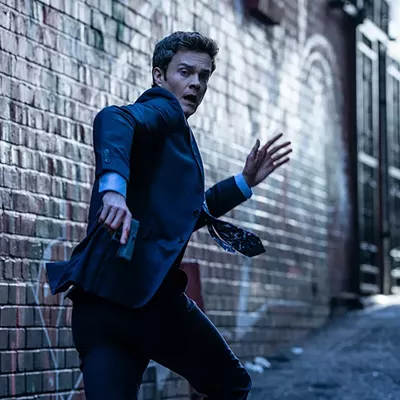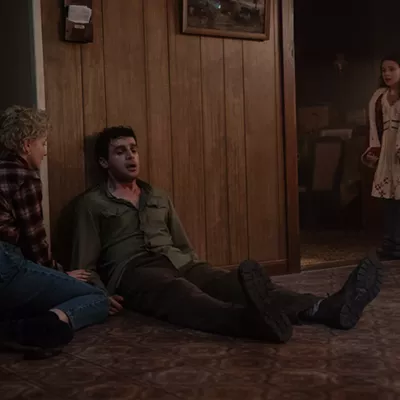Jean-Luc Godard once famously quipped, "All you need for a movie is a gun and a girl." Fifty years after the release of his era-defining Breathless, that is no less true, and his film—freshly restored and back in theaters—glimmers with as much audacity and novelty as it must have in 1960.
Simply put, Breathless is one of the few films pencil-marked on the kitchen wall demonstrating the growth of cinema. Co-written by contemporary François Truffaut, whose The 400 Blows was released to similar international praise the year before, Godard's feature debut was produced for nothing, was mostly improvised, offered frank discussions about young people having sex, and made cool really, really cool.
Even today, the style is mesmerizing. Godard's liberal and almost unpredictable use of jump cuts could be seen as entirely intentional or entirely unintentional, either the mark of a master or the unintended stroke of genius that is really nothing more than the folly of a young director. No question: Its place in the French New Wave pushed back against American convention in the latter days of the studio system and helped usher in more provocative filmmaking in Hollywood.
Even if you have seen Breathless before—not the Richard Gere remake—it deserves another shot now that it's back in theaters. The restoration was completed with the assistance of the film's cinematographer, Raoul Coutard, and even though it isn't in any way a disciplined movie or even a polished one, its immediacy is impossible to ignore. Handheld cameras and unusual editing are hallmarks of low-budget filmmaking, and every modern film that employs them—either by necessity or artistic design—owes at least a small debt of gratitude to Godard's breakthrough film.
The story is secondary, if it's even that important. The way Breathless implicitly democratizes filmmaking to an exploration nearly anyone could undertake may be its biggest impact, but it also helped bring the language of film into the real world. While we are desensitized to f-bombs and lurid sex talk in contemporary film, it was quite a thing a half-century ago to hear (or read, as is the case with this subtitled affair) someone discuss his conquests as frankly as Michel (Jean-Paul Belmondo). It was equally unheard of for a woman to admit she was pregnant out of wedlock, which Patricia (Jean Seberg) offers almost as an afterthought. Remember, on American television, married couple Lucy and Desi Arnaz weren't allowed to share a bed, because it might send the wrong message.
Godard's plot is as simple as a girl and a gun: Michel is a petty thief who, when confronted by police about a stolen car, shoots his way out of the jam and onto the lam. He stumbles upon his American ex-girlfriend, Patricia, hawking newspapers in Paris and hides out with her in her apartment. They talk about sex and existentialism, pretending they know enough about each. Curiously, the film, which begins with the attention span of a puppy, spends considerable time getting to know its principal characters, or at least as much of them as their own artifices will allow. Even then, it's incredibly revealing to see characters with so much confidence that has apparently materialized out of thin air—a sign of a generation waiting its turn.
What stands out above the development of the characters—which is really a development of styles of characters—is how Godard takes those simple images and exploits them for all they're worth without the exercise ever getting stale. Does Breathless lose its focus from time to time? Maybe, through 21st-century eyes, simply because of the way the films that followed have conditioned us to expect or look for certain things. But despite whatever shortcomings 50 years have added (and they would likely add some perceived demerit to nearly any film), the fact that this is anything but a traditional construction is inescapable: You can tell even now that Breathless isn't like other movies, new or old.
Over the past decade, more slowly and with less fanfare than the French New Wave, international cinema has again discarded the bloated tendencies of American film for the benefit of American film. Latin directors like Alfonso Cuarón, Alejandro González Iñárritu and Fernando Meirelles have parlayed culturally significant films like Y Tu Mamá También, Amores Perros and City of God into Hollywood contracts. Hell, Cuarón went from Y Tu Mama Tambien to Harry Potter. European and Asian directors have started to get their due as well. But is it a revolution? Probably not, and revisiting Breathless indicates that maybe we're overdue.
As Godard proved, all it takes is a girl and a gun.











